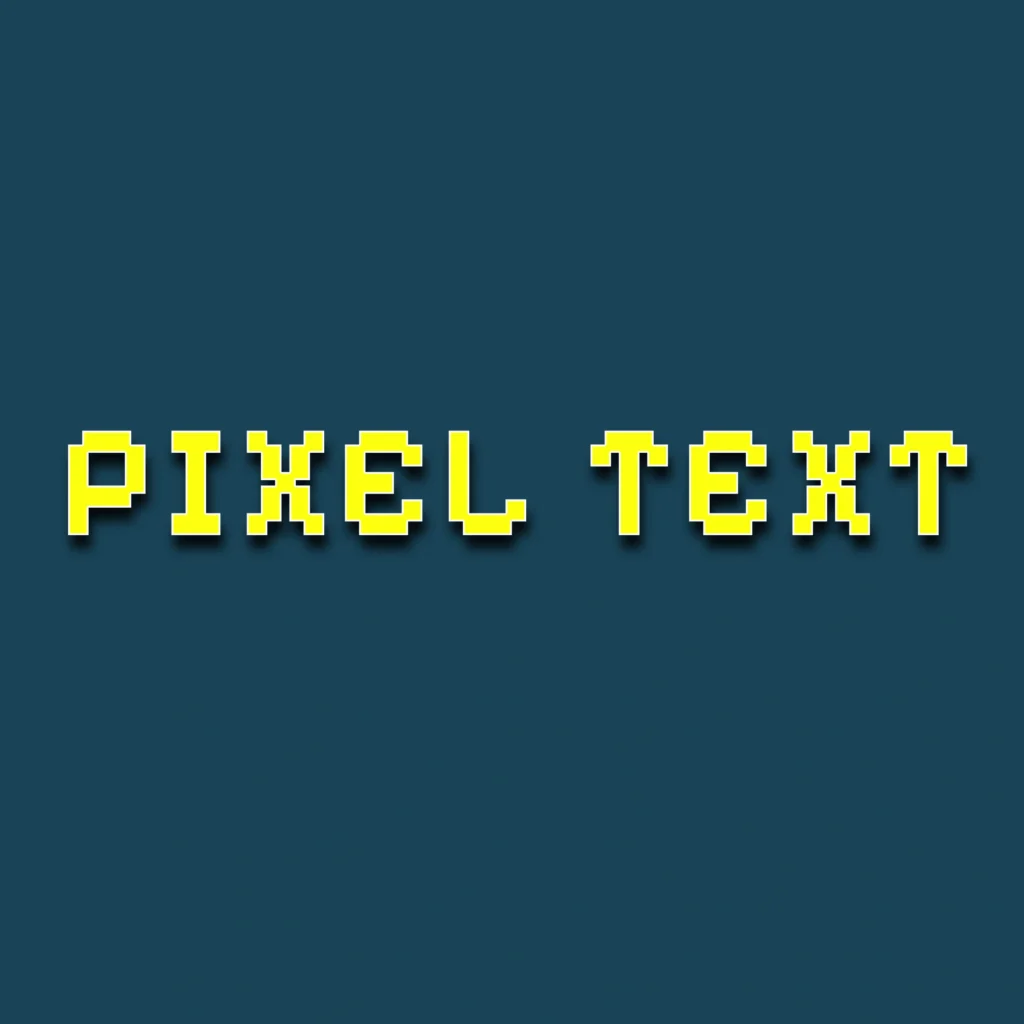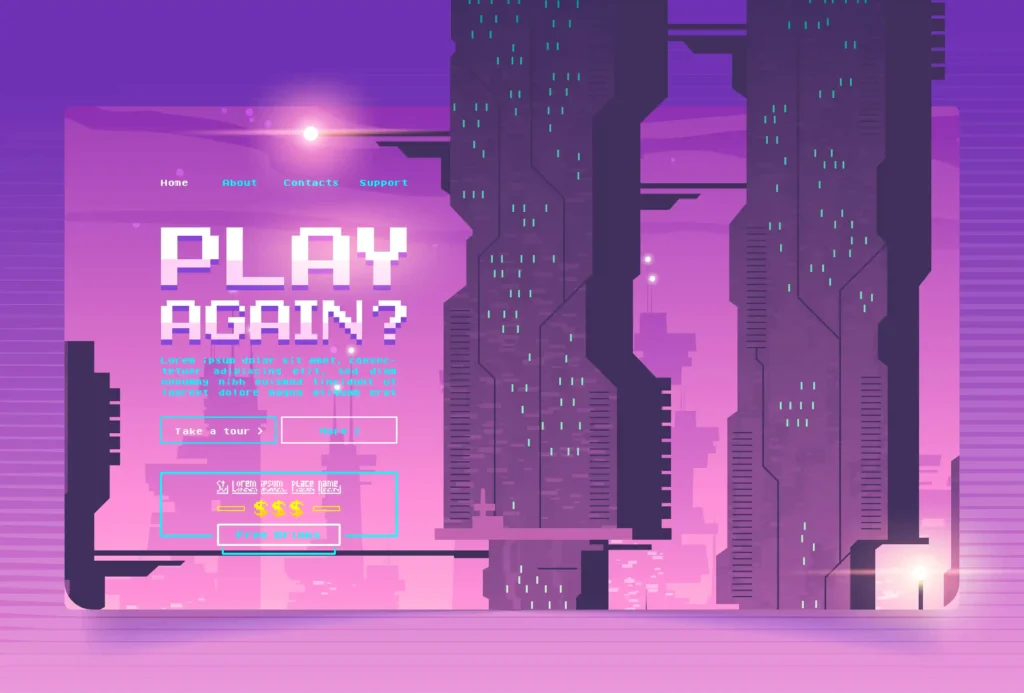Pixel art isn’t just a throwback to old video games – it’s a unique and versatile art form that’s built on simplicity and creativity. By carefully placing individual pixels, artists can create stunning visuals that grab attention, tell stories, and inspire emotion. Whether you’re a beginner learning the basics or an experienced artist pushing the boundaries of the grid-based medium, pixel art offers endless possibilities. From game characters to merchandise design, this guide showcases 13 imaginative ideas to help you expand your pixel art skills and bring your visions to life.
What is Pixel Art
Pixel art is a digital art form where images are created by carefully placing individual pixels (the smallest visible unit on a screen) on a digital canvas. Unlike typical digital images, which are composed of millions of pixels to create smooth gradients, pixel art uses a limited pixel grid, often with restricted colors, to create an image. This stylistic constraint gives pixel art a unique, retro aesthetic reminiscent of video games and computer graphics of the 1980s and early 1990s.
1. Getting Started: Pixel Art Basics
![]()
Essential Tools and Software
For those just starting with pixel art, choosing the right tools can make a huge difference. Unlike traditional digital art, pixel art works best with software specifically designed for creating small, grid-based artwork. Here are some popular options that are free or affordable, beginner-friendly, and feature-packed:
- Aseprite: An extremely popular software among pixel artists, Aseprite is specifically designed for creating pixel art and animations. It offers a clean, user-friendly interface with features like onion skinning (for animations), layers, and a variety of customizable color palettes.
- Piskel: A free, browser-based option that’s perfect for beginners. It’s simple and accessible, with all the basic tools you need, such as a color picker, grid, and a preview mode for seeing your animations in action.
- Pixilart: Another free, browser-based app, Pixilart is also great for beginners and has a social aspect as well, allowing users to share their creations directly on the platform.
Color Theory Basics and Palettes
When working in pixel art, you have a limited number of colors, so each color choice makes a significant impact. Start with a small palette, usually around 4-8 colors. Check out predefined color palettes on websites like Lospec or Adobe Color, where you can experiment with pre-selected color schemes to add balance to your art without overwhelming yourself.
2. Mythical Creatures in Pixel Form

Mythical creatures are perfect for pixel art because they allow for creative freedom with shapes and colors. From dragons and mermaids to phoenixes and centaurs, these creatures often feature dramatic details like wings, scales, or glowing eyes that translate beautifully into pixel form.
Creative Potential
- Create your versions of classic creatures, like a shimmering dragon with pixelated fire or a pixel phoenix rising from its ashes.
- Explore cultural myths for unique ideas, such as Japanese yokai or Greek chimeras.
- Design them as standalone artworks or incorporate them into a larger project like a fantasy game.
Example Ideas
Imagine a glittering sea serpent with pixelated waves around it or a pixel griffin standing majestically atop a mountain.
3. Pixel Art Emojis
Emojis are a staple of modern communication, and their simple, expressive shapes make them an exciting subject for pixel art. They’re a fantastic way to practice simplifying ideas while keeping them visually impactful. Pixel art emojis can range from standard expressions like a smile or wink to more creative takes like pixelized pizza, unicorns, or even pixel faces with glittering tears.
Creative Potential
- Create custom emoji sets with a personal or themed twist (e.g., space-themed emojis with planets and astronauts).
- Design pixel art emojis for social media stickers, chat apps, or digital merchandise.
Example Ideas
Picture a set of pixel art emojis for Halloween: a grinning pumpkin, a spooky ghost, or a bubbling cauldron. For a romantic theme, think of hearts, rings, or pixel roses.
4. Pixel Art Landscapes
![]()
Landscapes in pixel art are breathtaking, transforming tiny grids into vast, detailed worlds. Whether it’s a serene forest, a bustling city, or an alien planet, landscapes are perfect for experimenting with depth and atmosphere. The challenge lies in creating perspective and scale while working with limited pixels, but the results can be stunning.
Creative Potential
- Build fantastical worlds, like floating islands or glowing caves.
- Add small, moving details such as twinkling stars, flowing rivers, or flickering campfires to make landscapes dynamic.
- Create seasonal variations, like snowy mountains for winter or blooming meadows for spring.
Example Ideas
Picture a serene lakeside with a pixelated sunset, or a fiery volcano surrounded by charred ground and rising smoke. Even a minimalist desert scene with a single cactus can convey a powerful sense of place.
5. Cute Animal Sprites
![]()
Animals have always been a popular subject in pixel art. Their natural shapes and distinct features make them perfect for experimenting with grids, colors, and personalities. Designing animal sprites involves distilling the essence of an animal into a small, compact image. For example, a cat’s silhouette can be defined by its triangular ears and curled tail, while a bird might be recognized by its small body and outstretched wings.
Creative Potential
- Turn animal sprites into a mini collection, like a zoo or a farm scene.
- Use them as game assets for pet simulators or adventure games.
- Create themed animals, such as mythical creatures or hybrid species.
Example Ideas
Imagine a playful pixel penguin sliding on ice or a chubby panda munching bamboo. Even fantastical creatures like unicorns or phoenixes can come to life in pixel art, with their magical elements simplified into recognizable shapes.
6. Seasonal and Holiday Themes
Pixel art shines when it comes to capturing the charm of holidays and seasons, with small, colorful details that evoke festive cheer or seasonal beauty. These themes allow for endless creativity, whether you’re designing holiday cards, decorations, or themed game assets.
Creative Potential
- Design festive pixel art, like glowing Christmas trees, jack-o’-lanterns, or fireworks for New Year’s.
- Create entire seasonal worlds, such as snow-covered villages, blooming spring meadows, or autumn forests filled with golden leaves.
- Combine holiday and cultural traditions, like pixel art lanterns for Lunar New Year or colorful rangoli patterns for Diwali.
Example Ideas
Picture a cosy winter village with smoking chimneys and snowflakes falling softly or a vibrant summer beach scene with umbrellas, ice cream cones, and waves lapping at the shore.
7. Retro Game Characters
![]()
Pixel art characters are the foundation of many classic games, and their iconic look continues to inspire artists today. A retro character often reflects the genre of the game they belong to a heroic knight for a fantasy RPG, a cheerful farmer for a simulation game, or a daring astronaut for a space adventure.
Creative Potential
- Design a character and imagine their role in a game. For instance, a pixel wizard with glowing robes could be part of a magic-based RPG.
- Use bold, exaggerated features to give your characters a distinct identity, such as spiky hair or oversized hats.
- Experiment with multiple poses or expressions to bring them to life.
Example Ideas
Think of an explorer wearing a leather hat and carrying a lantern, or a sassy robot with LED eyes and glowing arms. Retro characters can also include humorous designs, like a taco-themed superhero or a villain with a candy-cane-shaped staff.
8. Cozy Room Scenes

Pixel art rooms are charming snapshots of tiny worlds, filled with intricate details that make them feel alive. These scenes might depict a snug bedroom with a warm bed and bookshelves, a sunny kitchen with plants on the windowsill, or even a secret alchemist’s lab cluttered with glowing potions.
Creative Potential
- Create themed rooms, such as a futuristic space pod or a medieval castle chamber.
- Use rooms to tell a story—add clues or personal touches, like family photos or a diary on a desk.
- Turn a series of rooms into a map, like levels in a game or areas of a character’s home.
Example Ideas
Imagine a whimsical treehouse with vines creeping up the walls or a witch’s cozy cottage with a bubbling cauldron and hanging herbs. Each detail adds a layer of personality to the space.
9. Retro Game Characters

Pixel art characters are the foundation of many classic games, and their iconic look continues to inspire artists today. A retro character often reflects the genre of the game they belong to a heroic knight for a fantasy RPG, a cheerful farmer for a simulation game, or a daring astronaut for a space adventure.
Creative Potential
- Design a character and imagine their role in a game. For instance, a pixel wizard with glowing robes could be part of a magic-based RPG.
- Use bold, exaggerated features to give your characters a distinct identity, such as spiky hair or oversized hats.
- Experiment with multiple poses or expressions to bring them to life.
Example Ideas
Think of an explorer wearing a leather hat and carrying a lantern, or a sassy robot with LED eyes and glowing arms. Retro characters can also include humorous designs, like a taco-themed superhero or a villain with a candy-cane-shaped staff.
10. Pixel Patterns and Textures
![]()
Pixel patterns and textures are all about creating seamless designs that can be used for backgrounds, wallpapers, or game tiles. From brick walls and wooden planks to grass fields and water surfaces, pixel textures bring life to static designs.
Creative Potential
- Create natural patterns, like rippling water, cracked earth, or leafy vines.
- Design whimsical patterns, like polka dots, pixel rainbows, or retro zigzags.
- Use textures as tiles for platformer games or as backgrounds for social media graphics.
Example Ideas
Picture a repeating pixel pattern of autumn leaves for seasonal vibes or shiny gold coins for a treasure map.
11. Pixel Art Typography

Typography in pixel art blends creativity with clarity, challenging you to design letters and words within a grid. Whether for game titles, posters, or banners, pixel typography is a great way to communicate style and mood.
Creative Potential
- Experiment with themes, like neon lettering for a cyberpunk vibe or rustic fonts for a Western feel.
- Add shadows or glowing effects to make the text pop.
- Incorporate your typography into designs, like banners for a pixel art festival or nameplates for characters.
Example Ideas
A glowing “Game Over” text in vibrant purple or a blocky “Welcome” sign for a pixel town.
12. Futuristic Pixel Cities

Pixel art is a perfect medium for imagining futuristic cities, filled with towering skyscrapers, flying cars, and glowing neon signs. The limitations of pixel art bring a unique charm to these sci-fi worlds, where every building and light tells a story.
Creative Potential
- Create bustling cityscapes with layered levels of activity, from busy streets to glowing rooftops.
- Add imaginative details like holographic billboards, floating platforms, or energy towers.
- Experiment with cyberpunk themes, combining dark, moody palettes with pops of neon pink, blue, and green.
Example Ideas
Think of a Blade Runner-style city with endless rain and glowing signs, or a utopian floating city with gardens and bright, futuristic architecture. Each city can be as simple or intricate as your vision demands.
13. Pixel Art for Merch: Stickers and Apparel
![]()
Stickers
Pixel art stickers are small but impactful. They’re perfect for decorating laptops, water bottles, notebooks, or even phone cases. The compact nature of pixel art makes it ideal for sticker designs, as it can convey bold and playful ideas even in a limited space.
Creative Ideas for Stickers
- Gaming Icons: Think of pixel hearts, power-ups, or game controllers, which resonate with gaming enthusiasts.
- Kawaii Animals: Tiny pixel animals like cats, pandas, or foxes with exaggerated features can add a dose of cuteness.
- Quirky Messages: Pair simple pixel designs with fun text, like “Game Over” or “Pixel Perfect.”
Pixel stickers also make great collectibles when designed as sets, such as a range of fruit, emojis or space-themed items.
Apparel
Pixel art apparel takes retro vibes to a whole new level. From graphic T-shirts to hoodies, pixel designs look fantastic on clothing, offering a playful and artistic touch. The blocky, vibrant style contrasts beautifully with plain or muted backgrounds, making pixel art stand out.
Creative Ideas for Apparel
- Bold Graphic Tees: Large pixel designs, such as a dragon, cityscape, or arcade machine, can dominate the front of a T-shirt for an impactful look.
- Subtle Details: Smaller pixel designs, like a pocket-sized pixel robot or a row of pixel mushrooms, create understated yet stylish apparel.
- Customizable Patterns: Create repeating pixel patterns, like waves, stars, or floral motifs, for a unique fabric design.
Pixel art apparel can appeal to a variety of audiences, from gamers and anime lovers to those who enjoy quirky, artistic fashion.









